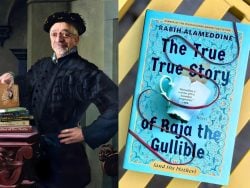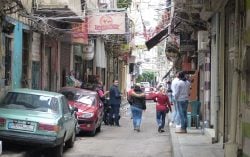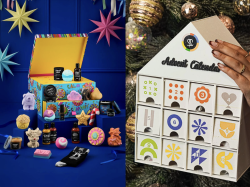A New Material World: Lebanese Designers Turn Fungi, Tea, and Bacteria into Fashion
Six young Lebanese designers spent a week in the mountains of Baskinta, Lebanon, learning how to create materials directly from nature. No chemicals. No machines. Just plants, bacteria, fungi, and time.
Terrapods, a sustainability tech lab, hosted the workshop and brought together young talents including Creative Space Beirut graduates Mostafa Al Sous, Iftikhar Kanawati, Jihan Azzam, and Patil Tachjian; Gregory Ayoub, a recent ESMOD Beirut graduate; and ALBA student Marlyn Miskawi.
Together, they explored a more responsible way to design. One that works with nature instead of against it.
Pioneers of the New Textile Age
Alve Lagercrantz is a Swedish fashion designer and researcher exploring the future of textiles through biology and digital fabrication. A Fabricademy instructor, he works with mycelium, microbial dyes, and bacterial cellulose to develop lab-grown alternatives to traditional fabrics. His mission is to localize fashion production and challenge the wasteful systems dominating the industry today.
Holly Adams is a UK-based designer, Fabricademy alum, and Terrapods intern who specializes in sustainable materials and climate-conscious design. With a background in mechanical and electrical engineering, she focuses on how biology, technology, and design intersect. Her work includes biofabrication, natural dyes, and textiles made from living organisms like mycelium and kombucha. From biodegradable wearables to 3D-printed clay reefs, her projects are rooted in environmental care and innovation.
Exploring Nature’s Materials
The group began by collecting natural materials from their surroundings to make dyes for both painting and fabric.
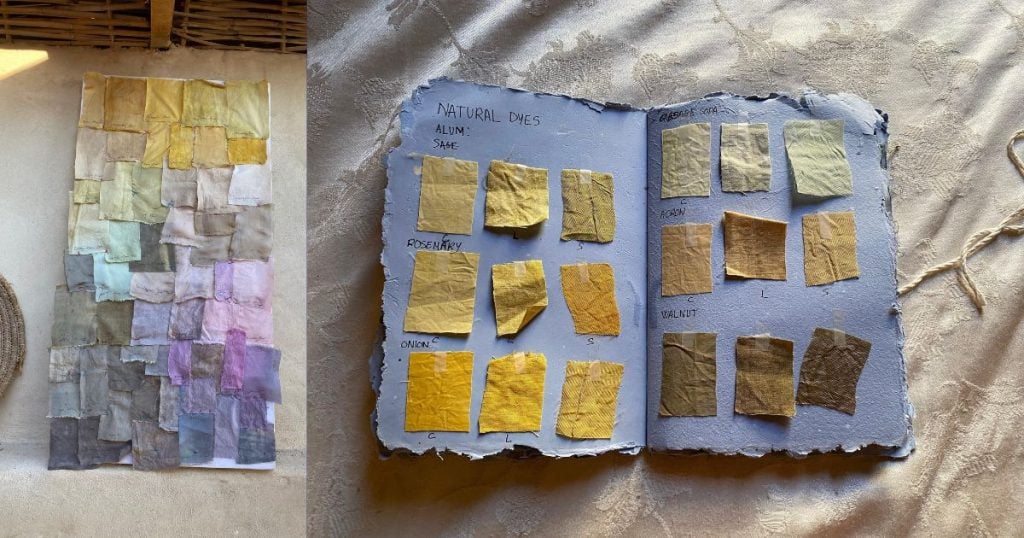
They created a bio-alginate yarn using sodium alginate, a natural polymer derived from seaweed. This biodegradable alternative to synthetic fibers offers a sustainable way to rethink the basic threads used in fabric.

Then came growing kombucha leather, a material formed by bacteria feeding on sweetened tea. The bacteria form a jelly-like layer that, once dried, turns into a thin, leather-like sheet. It looks delicate and papery, but this living material holds great promise.
Though still experimental, it could become a viable alternative to leather, especially as designers find ways to strengthen it naturally.
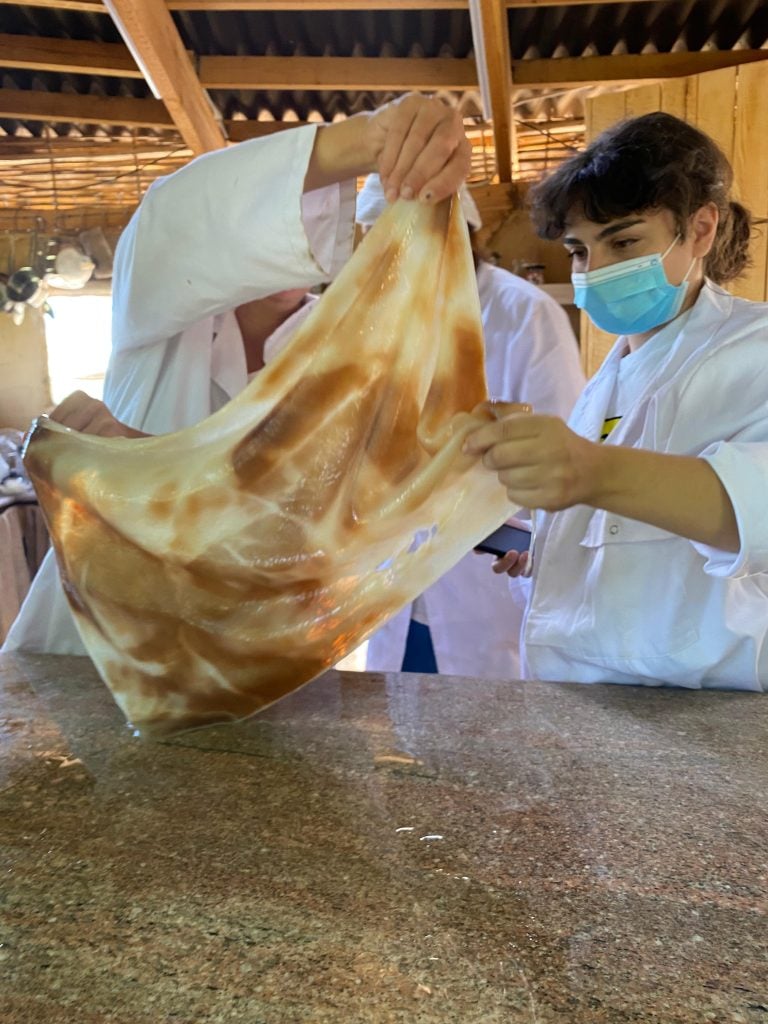
They also explored using mycelium, the root structure of mushrooms, to create biodegradable and compostable fabric alternatives.
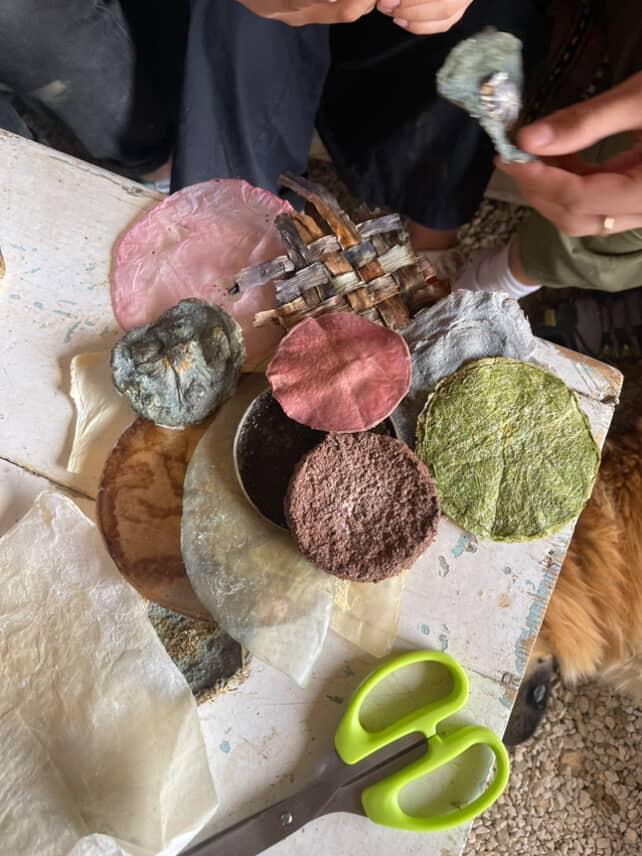
Everything they made was fully biodegradable and free from harmful chemicals. The message was clear: fashion can respect and protect the world it comes from.
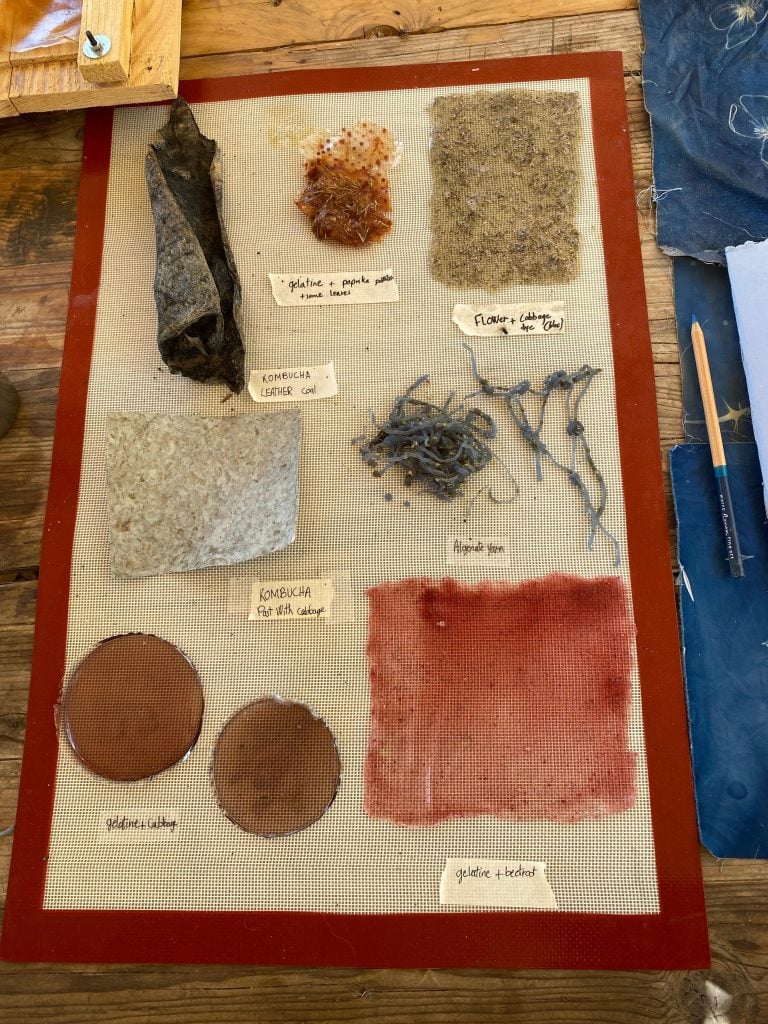
Why This Matters
It’s always inspiring to discover hidden creative pockets in Lebanon, especially when a group of young innovators is quietly reimagining the future of fashion through nature.
The truth is, the textile industry is one of the world’s biggest water polluters. According to The Earth Call (January 2025), textile production consumes huge amounts of water and pollutes roughly 20 percent of the planet’s clean water supply. Toxic dyes can leach into groundwater, and microplastics from synthetic fabrics contaminate rivers and oceans. They also make their way into marine life and eventually into the food chain.
Meanwhile, textile waste continues to pile up. Business Waste reports:
– Only 20% of discarded textiles are collected for recycling or recovery.
– It can take over 200 years for fabrics to decompose in landfills.
– The world produces 92 million tons of textile waste each year — only 12% is recycled globally.
In a world already facing climate stress and water scarcity, these numbers are hard to ignore. But what’s happening in places like Terrapods shows that it’s possible to shift the system. With natural materials, slow processes, and thoughtful design, there’s still a way forward — one that’s gentler on our planet.
A huge thank you to CSB students for these insights! This cohort was made possible thanks to the support of Maissa Abou Adal of The Tree House Foundation and the Holdal Group.
Terrapods is currently running weekly workshops. If you’re interested in joining, reach out to Joslin Kehdy at +961 76 009 644.
Enjoyed reading about these Lebanese designers and their journey into the new material world? Make sure to check out the #Lebanese Designers section fro more like this.
Disco Fever Tee
High quality t-shirt that is available in either round neck loose fit made of 100% cotton with short sleeves, or fitted cropped with a round neck and short sleeves (95% cotton,5% elastane).
Groovy Tee
High quality t-shirt that is available in either round neck loose fit made of 100% cotton with short sleeves, or fitted cropped with a round neck and short sleeves (95% cotton,5% elastane).
Disco Fever Tee
High quality t-shirt that is available in either round neck loose fit made of 100% cotton with short sleeves, or fitted cropped with a round neck and short sleeves (95% cotton,5% elastane).
Groovy Tee
High quality t-shirt that is available in either round neck loose fit made of 100% cotton with short sleeves, or fitted cropped with a round neck and short sleeves (95% cotton,5% elastane).


